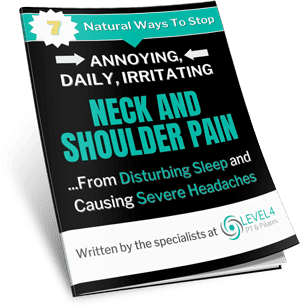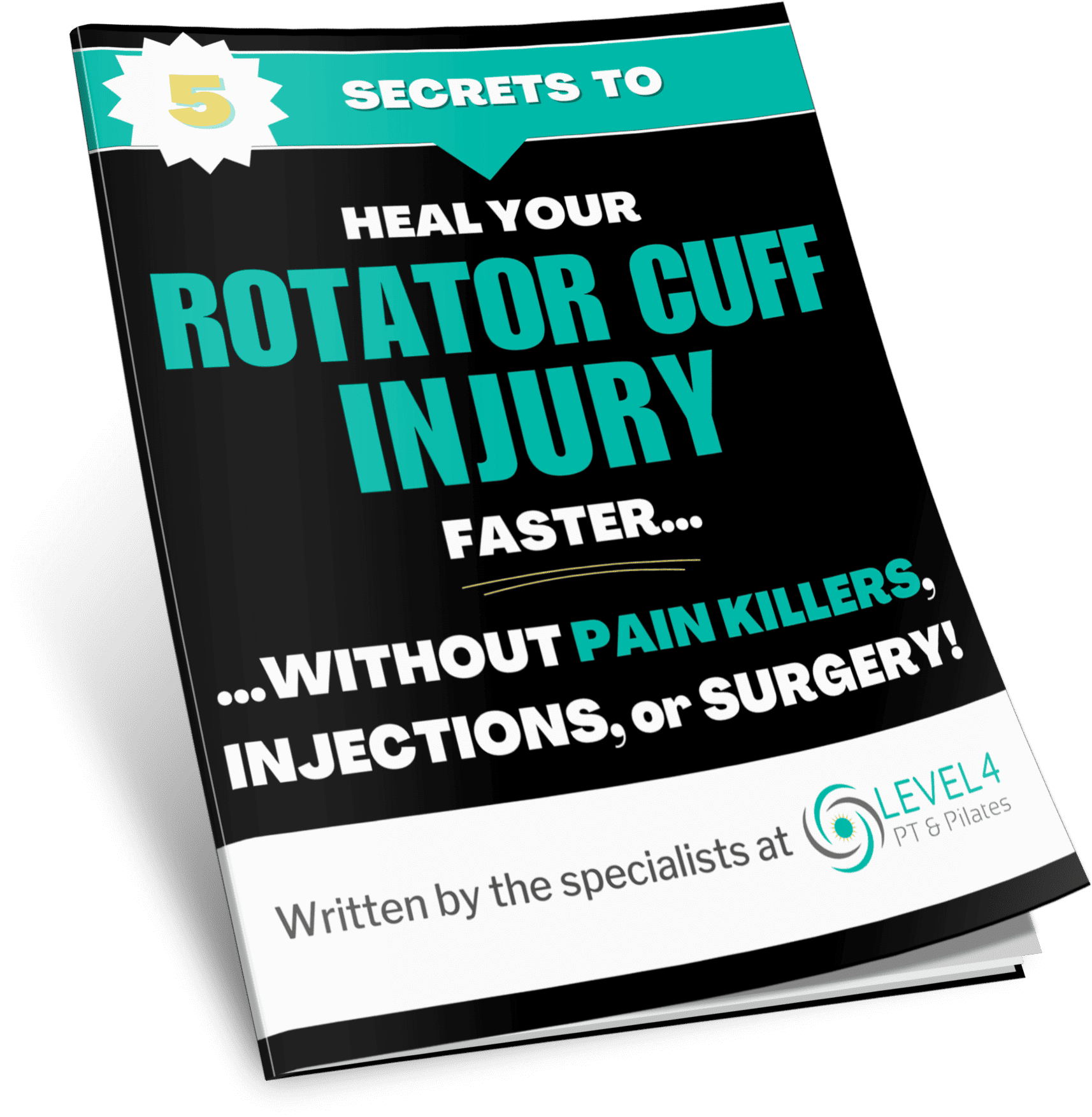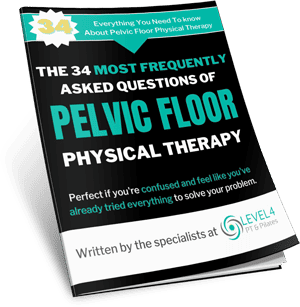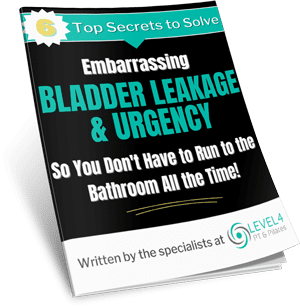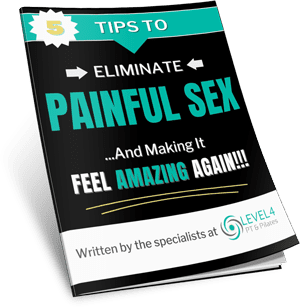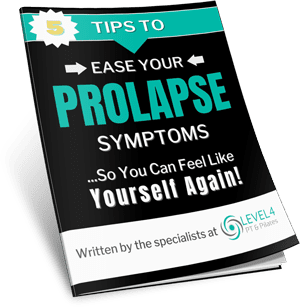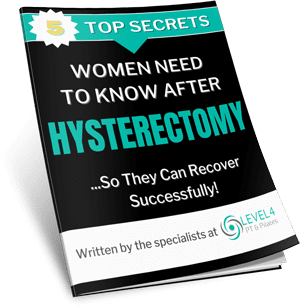
How Quickly Can I Return to Sports After ACL Surgery?
This week I wanted to answer a common question we recently get asked quite regularly by our post ACL surgery clients:
“Dr. Andalon…my name is Amy, I’m 36 years old and I had my right ACL reconstructed six months ago after injuring myself during a co-ed indoor soccer game. I was recently discharged from physical therapy and I’ve been cleared by my surgeon to resume my normal activity prior to surgery, but I still feel like I am not quite ready.
I tried to run short distances for exercise but I continue to feel pain and stiffness in my knee after a short jog – which makes it difficult to walk normally. My goal is to return to playing soccer again, but I am worried that I am still not ready for the higher demand my sport of choice will place on my knee. How quickly can I return to sports safely after ACL surgery?
More importantly, I am afraid of a possible re-tear of my ACL since I have done my research and have read that there is a possible risk of a re-tear. I would hate to go through this type of surgery all over again. Any advice?
Anterior Cruciate Ligament (ACL) Reconstruction
The ACL is a major ligament that helps to stabilize the knee joint. Athletes and recreational enthusiasts of all ages can experience an ACL tear, especially those who participate in high demand sports like soccer, football, volleyball, and basketball. After surgery, athletes tend to be very anxious to get back to the sport they love.
If you sound like Amy, the great news is that I’ve got some tips and advice to help you return to your sport (RTS) safely.
But first, other common complaints we get asked about following ACL reconstruction surgery are:
- Anterior knee pain around the kneecap
- Stiffness
- Loss of full range of motion
- Tenderness along the joint line
- Chronic swelling
- Knee instability
- Difficulty kneeling
- Numbness
- Arthritis
- Limp and/or discomfort while walking
- Muscle weakness
- Painful running
- Fearful when returning to active lifestyle or sport
Common Problems After ACL Reconstruction Surgery
Do any of these symptom patterns sound familiar?
If it does, you’ve probably wondered what exactly is causing you to have one or more of these symptoms which are interfering with your life?
If you’re like most people, you’ve probably already searched the internet attempting to find the best post ACL treatments or exercises to help solve your problem.
During your search, you will come across many potential treatments like:
- Return to sport testing
- Neuromuscular testing
- Hop testing
- Strength testing
- Stretching
And on, and on, and on…
To help you get back to their sport safely with minimal risk of re-injury, LEVEL4 PT & Wellness has developed an ACL Program. The performance aspect of the program emphasizes limb symmetry, proper landing/cutting mechanics and match fitness to minimize the athlete’s risk for re-tear.
Having ACL surgery is a big commitment. It is a painful procedure with a long-anticipated recovery. As doctors of sports physical therapy and performance enhancement specialists, we know all of you have one goal in mind, returning to sports or an active lifestyle after ACL surgery.
The big mistake after ACL surgery
The big mistake most people do is they try and rush their return to sports too soon! If you attempt to return to sports too soon after ACL surgery then you run the risk of tearing or re-injuring your new ACL… and since practicing a sport is among the most complex and demanding activities for the human body and in particular for the musculoskeletal system and joints. When an injury occurs, it stops the perfect machine that is the human body, which must then be restored to almost perfect conditions in order to allow a resumption of sports activity.
When the anterior cruciate ligament (ACL) is injured, ACL reconstruction is usually considered the gold standard of treatment, especially in active young patients. However, it is also necessary to consider various interconnected aspects (anatomy, biomechanics, and psychology) relating to the patient-athlete, as these can contribute to determine the outcome of the ACL reconstruction, which can range from successful to disastrous.
The cold hard truth
Allowing a patient to return to sport and unrestricted physical activity after ACL injury and reconstruction is one of the most challenging and difficult decisions we have to make for our clients. Evidence suggests that an athlete may be 30 percent likely to re-tear an ACL, 20 percent on the contralateral leg and 10 percent on the same leg. LEVEL4’s program aims to lower that risk by making sure an athlete has good landing and cutting mechanics when fatigued. A successful return to sports or active lifestyle after ACL surgery is our number one goal.
There are many variables that go into determining when you should try to return to sports after ACL surgery. The risks of returning to the playing field too early after ACL surgery includes suffering a re-tear of your new ACL.
You need a team
A successful return to sports after ACL surgery requires a team approach that potentially involves you, your surgeon, your athletic trainer and your physical therapist. At LEVEL4 we work very closely with any medical provider involved in your recovery and have very strict criteria for when an athlete can return to sports after ACL surgery. This is vital to your recovery because if you attempt to return to sports too soon you have a significant risk of tearing your new ACL.
Let that sink in…
Indeed, many factors have to be considered before it can be considered safe for a client to load a reconstructed knee. Moreover, return to sport itself is a controversial outcome measure when evaluating the success or failure of an ACL reconstruction procedure.
Intrinsic factors
The decision to allow an athlete to return to sport should be based first of all on a series of intrinsic factors, that depend exclusively on the patient himself. Each patient is unique and therefore generalization of rehabilitation protocols could lead to unsatisfactory outcomes. Awareness of the following aspects could help clinicians to optimize outcomes and possibly avoid failures as well.
The statistics can be alarming. You might have a 45% risk of tearing your new ACL if you have not rehabilitated your knee properly. You can drive that risk down to 18-20% with the proper training. Unfortunately, once you tear your ACL you are always at risk of tearing the new ACL.
The first goal of your physical therapy program after ACL surgery early on is to get back your motion and strength. The later stages of the recovery process involve improving your balance, agility, jumping and landing skills. Doing so will decrease the risk of re-injuring your knee and re-tearing your ACL. Your recovery from an ACL reconstruction involves not only the physical aspects of your recovery but perhaps equally as important, the emotional and psychological components.
Once PT has started, the research today shows that many people will tolerate an accelerated ACL surgery physical therapy program and be able to return to sports as early as 8 months. There are many experts who feel that might be too early. Thus, there is a lot of confusion on the proper way to return to sports after ACL surgery.
The verdict
What criteria do our experts use to determine when you might be able to return to sports after ACL surgery?
Sorry, but against popular belief, there is no clear-cut answer. Despite some success in early return to sports, most specialists, if questioned either privately or on the podium at a meeting, will admit that there is some increased risk returning to a Level I sport before 9-12 months.
In my opinion, many studies support this. At a past American Orthopaedic Society for Sports Medicine (AOSSM) meeting in Seattle, a symposium paper was presented on “pediatric” ACLs. This included patients as young as 17 years old. With careful analysis, they noted that significant neuromuscular control deficits persisted past 11 months in almost all patients. They strongly cautioned against returning to sport prior to these deficits being corrected. If an ACL tear is devastating to a teenager, a re-tear is exponentially worse to an active adult.
We discuss all of this with our clients and their family. We encourage them to try and give it 9-12 months (at a minimum). Time questions aside, we don’t recommend a return to Level I sport (soccer, basketball, football) after an ACL surgery until there is no pain with activity, no swelling, full range of motion, good stability, strength close to equal to the opposite side.
Then, our clients have to pass a series of rigorous functional tests of neuromuscular control, administered by our ACL return to sports specialists. If they pass this, only then, with full awareness of the risks involved, are they released to a sport. It typically takes at least 8-12 months to achieve all of these goals after ACL surgery.
A recent study in AJSM showed an ACL re-tear rate of 17% in Division I collegiate athletes if they had their primary ACL reconstruction done prior to playing in college. To us at LEVEL4, this is a sobering statistic. But on a positive note, around 80% of athletes are able to return to at least one year of collegiate athletics after ACL reconstruction.
The Cold Hard Truth
Most physical therapy is not good at advanced stage rehabilitation!
Yes, I said it!
Never mind the white elephant in the room… many PT’s are poor at prescribing higher level exercises. Most physical therapists just don’t see people past 8-12 weeks after surgery because of insurance visit limitations. They don’t have experience or access to these patients once they’re discharged from PT. It’s at this point that the real strength, power, endurance and agility activities really take shape. Unfortunately, most patients are on their own or working with other professionals. Therefore, it is vital to guide the later-stage rehab process.
But sadly, most physical therapists often don’t. It’s a much longer process, longer than we think and longer than most people want it to be.
A common mistake you don’t want to do as many others post ACL surgery patients do – is they don’t complete a complete return to a sports rehabilitation program and return to sport too soon.
If you have had ACL reconstruction surgery and feel like prior rehab failed you or you don’t feel like you are ready to return to sport or active life, know there is still hope for you. Here are five things to consider before returning to play after an ACL-Reconstruction and be worry-free from tearing your ACL again:
1 – Timing isn’t everything
A decade ago, most patients were discharged from physical therapy around the twelve-week mark, then released by their physician to return to play at the six-month mark. Instead of a time-based criterion, evidence suggests more objective criteria. LEVEL4’s ACL recovery and return to sports recovery program includes a cluster of tests – Y balance testing, hop testing, and video analysis of cutting and landing tasks to determine an athlete’s readiness to return to play. Educating patients from the first day of post-op about the criteria-based return to play instead of returning right at the six-month post-op mark will help them have realistic expectations.
2 – Hop testing alone is NOT sufficient
A hop test is popular with physical therapists, athletic trainers, and strength and conditioning coaches as criteria as a return to sport readiness indicator. Unfortunately, a recent article came out suggesting that hop testing by itself is insufficient to allow an athlete to return to play. If hop testing is the only criteria your physical therapist, athletic trainer or strength and conditioning specialist used for your return to play, you as the athlete or active individual have been done a disservice. Other objectives, sport-specific criteria should also be used.
Similarly, power is one of the last items to come back. At LEVEL4 we include single-leg, triple hop testing in the “prevention” screen so that we have a baseline on athletes. If that athlete ever has an injury, our ACL recovery specialists at LEVEL4 can make sure that athlete not only returns to their baseline but exceeds it. Athletes often demonstrate symmetry by the six-month post-op mark. However, their power often doesn’t return until the 7-8-month post-op mark. By having a baseline, our ACL recovery specialists can ensure athletes are not only symmetrical but re-gain power as well.
3 – Fatigue
LEVEL4’s final RTP phase includes an 8-minute fatigue protocol. Because athletes are most likely to get injured when they are tired, our ACL recovery and return to sport specialists want to ensure that landing and cutting mechanics are flawless when fatigued. This is a key differentiator of LEVEL4’s program.
4 – Routine bracing after ACL reconstruction surgery is not proven to be necessary.
For years, surgeons have prescribed a knee brace for their patients following ACL repair surgery. More recently, evidence indicates that this may not be necessary.
A study published in June of 2013 examined the long-term effects of using a knee brace after ACL surgery versus using no brace at all. The researchers randomized 64 patients who had ACL surgery into two groups. One group used a brace after surgery, and the other group did not use a post-operative brace after their ACL surgery.
Four years after surgery, the researchers measured ACL ligament integrity, pain levels, and x-ray pictures in each patient who had surgery. They found that there was no difference in ligament integrity between groups.
There was one significant difference between the brace group when compared to the no-brace group. The patients who did not use a knee brace after surgery reported less pain during sports or heavy physical work activities. There also were no reported injuries in the no-brace group as compared to the brace group.
If you have had ACL surgery, talk with your doctor about whether or not you need a brace following your procedure.
5 – Appropriate progression is key before returning back into full contact
Patients are often allowed to return to non-contact practice participation before the six-month mark, or before they pass all return to play criteria under fatigue. This allows the athlete to start getting some sport-specific muscle memory and fitness. Many parents and athletes think that “getting released” means they can go back to playing a 90-minute soccer match (or even worse – an entire tournament) the first week back. To ensure safe progression, when “released,” athletes should participate in several weeks of full-contact practices before trying just a few minutes in each half of a match. Our specialists work hard to mimic sport-specific movements in physical therapy, but reactive decision-making is difficult and best replicated during practice and games. This can fatigue athletes quickly. Educating patients about appropriate progression is key to minimizing their risk for re-injury!
As you can see, determining when to return athletes to sports is a challenging issue. We want to limit your risk of re-injury as much as you do. Bottom line… do not rush your return to sports. Get that leg and your mechanics and stability as close to normal as possible. Find an ACL recovery and return to sports specialists that implement appropriate return to sport interventions that include sports specific performance training and tracks the vital objective data to help you maximize in sport or life performance. It will be time well spent.
Using these right tests can help the rehab specialist reduce ACL re-tears as noted in this study from BJSM in 2016. They showed reinjury rates were “significantly reduced by 51% for each month RTS was delayed until 9 months after surgery, after which no further risk reduction was observed.”
Furthermore, 38.2% of those who failed return to sport criteria involving hop tests and quad strength symmetry within 10% suffered re-injuries versus 5.6% of those who passed all of the testing criteria.
Closing Thoughts on ACL Return to Sport Testing
We’re missing something but it does seem that the time-based scenario may be an option to consider, meaning they need to stay out of their sport for at least 9 months, and ideally 12-24 months, or as long as they are continually doing their progressive strength training.
I think therein lies the answer. As physical therapists, the majority don’t do a very good job at advanced strength training and periodization. Plus, the fact that the athlete is all too eager to return to their sport without fully understanding the consequences.
So, how do you really know when the time is right to go back? Essentially, it is a multi-factorial decision-making process that involves ongoing assessment of physical and emotional readiness, functional testing to determine strength, power, and movement capacity, and consultation with the MD, athlete and parents.
Understanding potential re-injury risk as well as looking at any prior injury history is also important in order to make the best decision possible for the athlete. In the end, following a sound individualized rehab plan and performing appropriate post-rehab training to prepare for the demands of one’s sport is paramount to optimize recovery and prevent re-injury.
Returning To Play!
Are you or someone you know post ACL surgery who want to be confident about your return to sport and know you are ready to compete at the highest level again…without risk of returning too soon?
Do you want access to the same testing professional athletes to use for sports readiness? If so, then we have the solution you have been looking for. If you would like more information on LEVEL4’s return to play testing please email us at theteam@level4pt.com or call us at (760) 503-4440 to schedule a discovery session or visit https://www.level4pt.com/acl-recovery-return/.
I hope this article is able to help you make a better decision for your health.
If you know of someone who would benefit from reading this (or needs to read it), please share it with them.
Dedicated to your health,
Dr. Oscar Andalon, PT, DPT
San Diego’s Leading Sports Injury Specialists at LEVEL4 PT & Wellness
- Can Physical Therapy Help My Muscles After Having Covid? - January 26, 2022
- The Real Story Behind What’s Causing Your Sciatica - August 30, 2021
- Should I Have Surgery to Repair a Tear in My Rotator Cuff? - February 9, 2021





